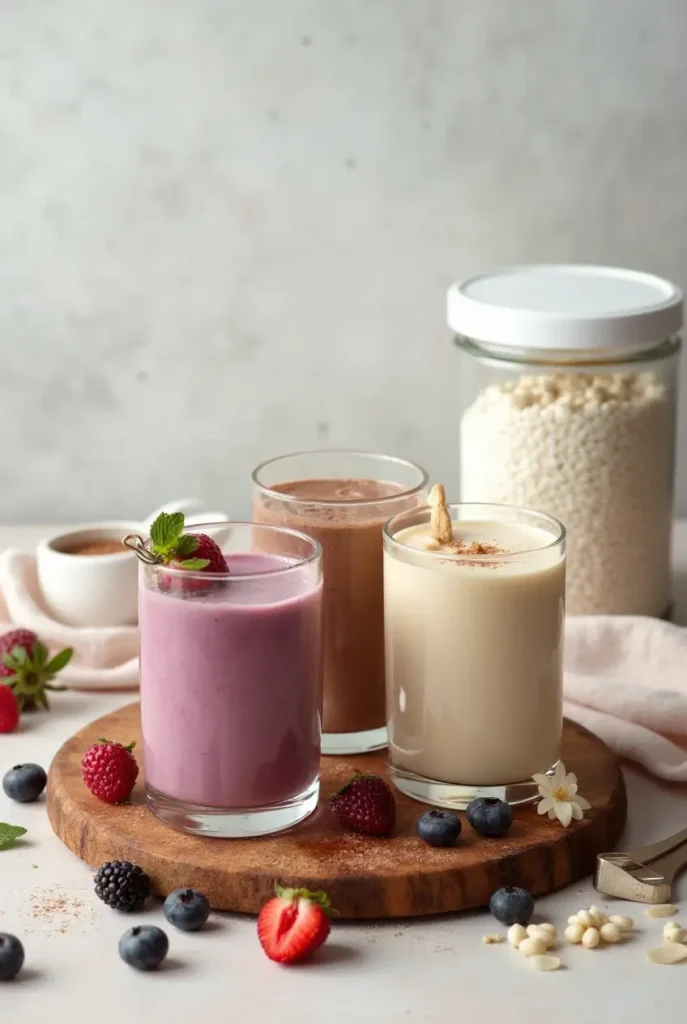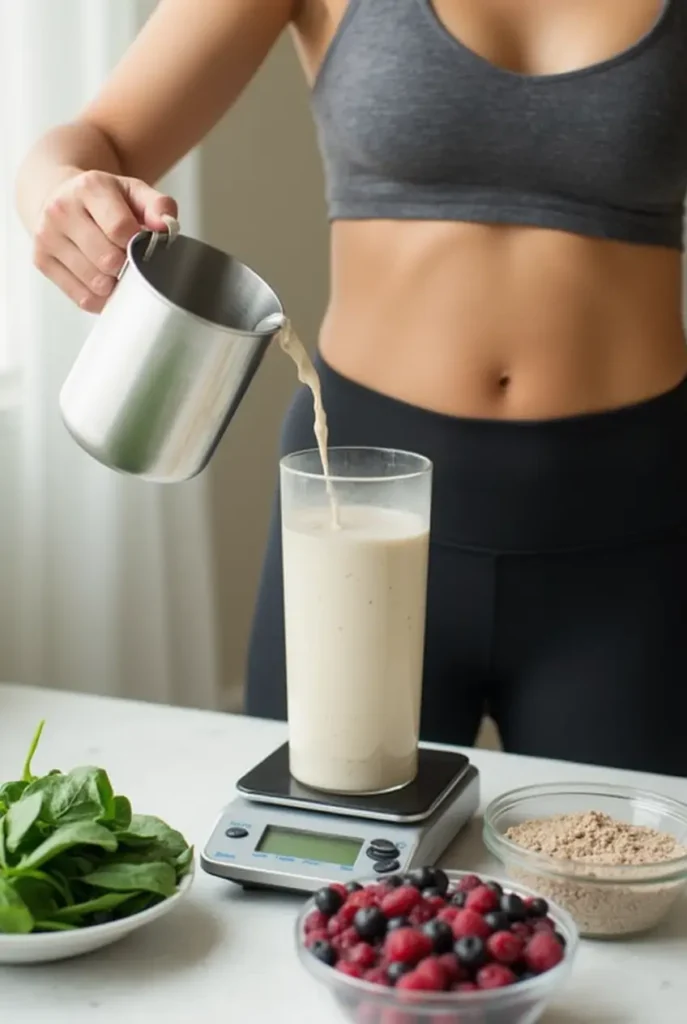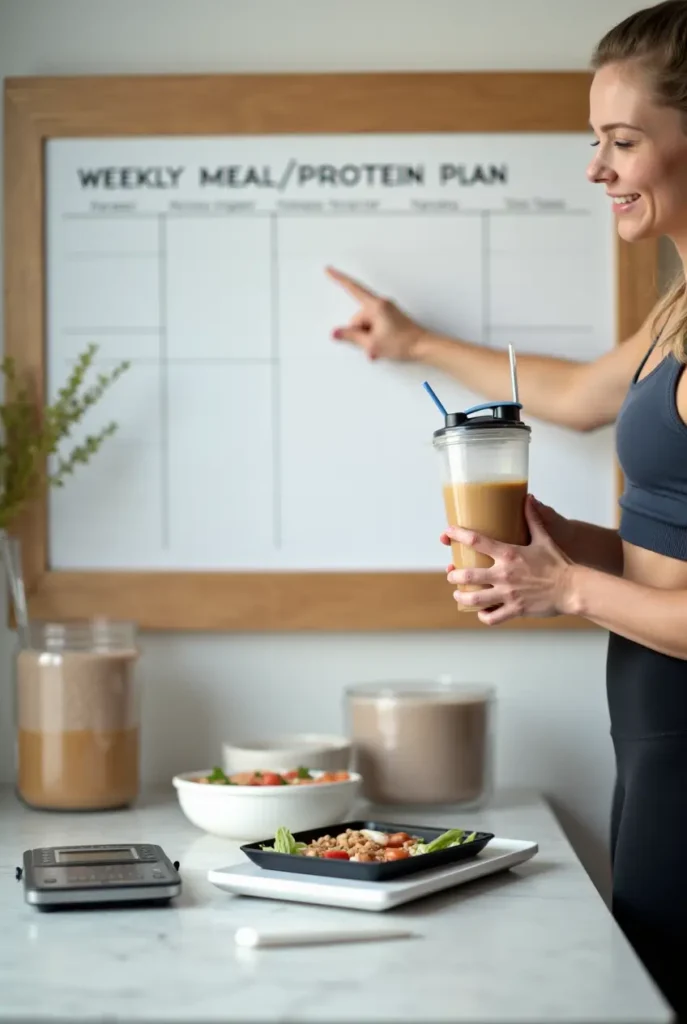Are you looking to shed some pounds and considering protein powder as your secret weapon? You’re not alone! The relationship between protein powder and weight loss has become a hot topic in fitness circles, but there’s so much more to it than what you see in flashy advertisements.
I’ve spent years experimenting with different approaches to weight management, and I’ve discovered that protein powder can be a game-changer when used correctly. But here’s the thing – there are some crucial facts about protein powder and weight loss that many experts conveniently leave out of the conversation!
Today, I’m pulling back the curtain on everything you need to know about using protein supplements to support your weight loss journey. From timing your protein intake to choosing the right type for your specific goals, this guide will transform how you approach supplementation.
Table of Contents
The Science Behind Protein Powder and Weight Loss
Let’s get real about how protein powder and weight loss actually work together. The connection is more fascinating than most people realize!
Protein is your body’s secret weapon for weight management. When you consume protein, it triggers several beneficial processes:
- Higher thermic effect – Your body burns more calories digesting protein compared to fats or carbs
- Increased satiety – Protein helps you feel fuller longer, reducing overall calorie intake
- Muscle preservation – During weight loss, adequate protein helps maintain lean muscle
Research published by Harvard Health shows that higher protein diets can boost metabolism by up to 80-100 calories per day. That might not sound like much, but it adds up!
Protein powder simply offers a convenient way to increase your protein intake without adding excessive calories. A typical scoop provides 20-25g of protein for only 100-150 calories – a fantastic protein-to-calorie ratio that supports weight loss.
Types of Protein Powder for Weight Loss: Which Works Best?

Not all protein powders are created equal when it comes to weight loss. The type you choose can significantly impact your results!
Whey Protein
Whey is the superstar of protein powder and weight loss. It’s quickly absorbed and rich in leucine, which helps preserve muscle while losing fat.
Best for: Quick post-workout recovery and daytime use
If you’re looking for delicious ways to incorporate whey protein, check out these whey protein shake recipes for weight loss that taste amazing while supporting your goals.
Casein Protein
Casein digests slowly, providing a steady release of amino acids over several hours.
Best for: Nighttime use to prevent muscle breakdown during sleep
Plant-Based Proteins
Options like pea, hemp, and rice protein are excellent for:
- Those with dairy sensitivities
- Vegans/vegetarians
- People seeking reduced environmental impact
Plant proteins often contain more fiber, which can enhance the feeling of fullness – a huge plus for weight loss!
The Timing Secret: When to Take Protein Powder for Maximum Weight Loss
The when matters just as much as the what! Optimal timing of protein powder and weight loss success go hand-in-hand.
- Morning: Starting your day with protein helps control hunger hormones and stabilizes blood sugar
- Pre-workout: A small protein serving 30-60 minutes before exercise can fuel your session
- Post-workout: The classic 30-minute “anabolic window” helps with recovery and muscle preservation
- Between meals: Protein shakes make perfect snacks to curb cravings
- Before bed: Slow-digesting proteins support overnight recovery and next-day metabolism
My personal favorite is a morning protein shake with some added greens. It kickstarts my metabolism and keeps me satisfied until lunch!
Common Mistakes That Sabotage Your Protein Powder and Weight Loss Results
Even with the best protein powder, these mistakes can derail your weight loss progress:
Mistake #1: Using Protein Powder As A Complete Meal Replacement
Protein powders lack the complete nutrition of whole foods. While they can replace occasional meals, relying on them too heavily deprives your body of essential nutrients.
Instead: Use protein powder to supplement a diet rich in whole foods like vegetables, fruits, healthy fats, and complex carbs.
Mistake #2: Choosing Highly Sweetened Formulas
Many commercial protein powders contain excessive sugar or artificial sweeteners that can:
- Trigger cravings
- Cause digestive issues
- Add unnecessary calories
Instead: Opt for unflavored or naturally flavored options with minimal additives. Try these delicious vanilla protein shake recipes that use natural ingredients to enhance flavor.
Mistake #3: Not Accounting For Total Calorie Intake
The protein powder and weight loss equation still depends on calorie balance. Adding protein shakes without adjusting your overall diet means adding calories!
Instead: Factor your protein shake calories into your daily total. Use protein powder to replace higher-calorie foods, not as an addition to your regular diet.
Creating the Perfect Protein Shake for Weight Loss

The ideal weight loss protein shake strikes a balance between nutrition, satiety, and taste.
The Foundation Formula:
- Protein Base: 1 scoop (20-25g) of your preferred protein powder
- Liquid: 8-12 oz of water, unsweetened almond milk, or other low-calorie base
- Fiber Source: 1 tablespoon chia/flax seeds or a handful of spinach
- Healthy Fat: 1 tablespoon nut butter or ¼ avocado (optional)
- Flavor Enhancer: Cinnamon, vanilla extract, or cocoa powder
Pro tip: For more filling weight loss shakes that taste amazing, check out these protein shake recipes to lose weight that I’ve perfected over years of testing!
Beyond the Shake: Creative Ways to Use Protein Powder for Weight Loss
Protein powder is far more versatile than just shakes! Expand your options with these creative uses:
- Protein oatmeal: Add a scoop to your morning oats for staying power
- Protein pancakes: Create a satisfying breakfast that won’t spike blood sugar
- Protein energy balls: Perfect pre-workout snacks that crush sweet cravings
For a sweet treat that won’t derail your diet, try these incredible whey protein brownies that satisfy chocolate cravings with a fraction of the calories!
The Protein Powder and Weight Loss Timeline: What to Expect
Setting realistic expectations is crucial for sustainable results:
Week 1-2: You may notice reduced hunger and cravings as your protein intake increases
Week 3-4: Improved workout recovery and energy levels become apparent
Week 4-8: If in a calorie deficit, weight loss becomes more noticeable, with better preservation of lean muscle compared to low-protein diets
Beyond 8 weeks: Continued improvements in body composition (higher muscle-to-fat ratio)
Remember: Protein powder supports weight loss, but doesn’t cause it independently. The combination of increased protein intake, appropriate calorie deficit, and regular exercise creates lasting results.
Special Considerations: Who Should Be Careful With Protein Supplements?
While protein powder and weight loss go hand-in-hand for many, some individuals should approach with caution:
- Those with kidney issues: High protein intake may stress already compromised kidneys
- People with dairy allergies: Many protein powders contain milk derivatives
- Individuals with digestive disorders: Some may experience bloating or discomfort
According to the Mayo Clinic, most healthy adults can safely consume protein supplements, but consulting with a healthcare provider is always wise.
Combining Protein Powder With Exercise for Enhanced Weight Loss

The magic really happens when you pair proper protein intake with the right exercise regimen:
Strength Training
Resistance exercise preserves and builds muscle while using protein efficiently. Aim for 2-3 sessions weekly, focusing on compound movements like:
- Squats
- Deadlifts
- Chest press
- Rows
High-Intensity Interval Training (HIIT)
HIIT creates an “afterburn effect” where your body continues burning calories post-workout. This pairs perfectly with protein’s thermogenic properties!
A simple starter HIIT workout:
- 30 seconds maximum effort
- 90 seconds recovery
- Repeat 8-10 times
- Finish with a protein shake to support recovery
Real Talk: The Protein Powder Myths You Need to Stop Believing
Let’s bust some common myths about protein powder and weight loss:
Myth #1: “Protein powder makes women bulky”
Truth: Without testosterone levels like men, most women won’t build significant muscle mass. Protein helps create a toned, lean physique.
Myth #2: “All protein powders taste terrible”
Truth: Modern formulations have come a long way! Try these strawberry protein shake recipes for proof that healthy can also be delicious.
Myth #3: “More protein always means more weight loss”
Truth: There’s an optimal range (typically 1.6-2.2g per kg of body weight daily). Beyond this, extra protein offers diminishing returns and may be stored as fat.
How to Choose a Quality Protein Powder for Weight Loss
Not all products deliver what they promise. Here’s your quality checklist:
- Check the protein content: Should be at least 20g per serving
- Examine the ingredients list: Shorter is generally better
- Watch for hidden sugars: Look for less than 2g per serving
- Beware artificial sweeteners: Some may trigger cravings
- Consider third-party testing: Certifications from NSF or Informed Choice indicate purity
For beginners, I recommend starting with a simple whey protein isolate or plant-based blend with minimal ingredients.
Creating a Complete Protein Powder and Weight Loss Plan

Let’s put it all together with a simple weekly framework:
Sample Weekly Protein Plan:
Monday & Thursday: Morning whey protein shake + afternoon strength training Tuesday & Friday: Protein oatmeal breakfast + HIIT workout Wednesday: Protein smoothie lunch + active recovery (walking/yoga) Weekend: Protein pancakes breakfast + one protein-based snack daily
For those busy days when you need quick options, having high protein breakfast ideas on hand ensures you stay on track without sacrificing nutrition.
FAQs About Protein Powder and Weight Loss
Q: Can protein powder alone make me lose weight?
A: No, protein powder supports weight loss as part of a calorie-controlled diet and exercise program. It’s a tool, not a magic solution.
Q: How much protein powder should I consume daily for weight loss?
A: Most benefit from 1-2 servings daily, fitting within your total protein needs (typically 1.6-2.2g per kg of body weight).
Q: Will protein powder affect my hormones?
A: Quality protein supplements shouldn’t impact hormone levels. However, some products contain additional ingredients that might, so reading labels is crucial.
Q: Can I drink protein shakes while intermittent fasting?
A: Protein shakes break a fast, as they contain calories. Save them for your eating window.
Q: Is it better to use protein powder before or after a workout for weight loss?
A: Post-workout is generally optimal for recovery, but overall daily protein intake matters more than perfect timing.
The Bottom Line on Protein Powder and Weight Loss
Protein powder can be a powerful ally in your weight loss journey when used strategically. The key benefits include appetite control, metabolism support, and muscle preservation – all crucial factors for sustainable weight management.
Remember these essential takeaways:
- Choose quality supplements with minimal additives
- Use protein powder to supplement, not replace, whole foods
- Combine with appropriate exercise for optimal results
- Be consistent with your overall calorie intake and protein timing
Your journey to a healthier weight doesn’t have to be complicated. Sometimes the simplest approaches – like strategically incorporating protein powder into a balanced lifestyle – yield the most sustainable results.
Have you tried using protein powder for weight loss? What were your experiences? Share your thoughts in the comments below, and let’s learn from each other’s journeys!

